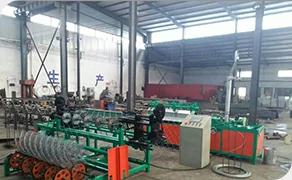White construction fences are a common sight in cities and towns around the world. These temporary barriers are put up to protect construction sites and keep pedestrians safe from construction hazards. But there is more to these fences than just their practical purpose – they also play a role in shaping the urban landscape and reflecting the changing nature of our built environments.
The use of white construction fences is not just a coincidence. White is a color that symbolizes cleanliness, safety, and neutrality. By using white fences, construction companies signal to the public that the site is safe and secure. This is especially important in densely populated areas where construction sites can pose a danger to passersby. The white color also makes the fences stand out and draw attention, helping to make sure that people are aware of the construction activity going on behind them.
But white construction fences do more than just signal safety – they also have a visual impact on the urban environment. In a cityscape filled with grey buildings and pavement, a row of white fences can stand out like a fresh coat of paint.
This can add a touch of brightness and modernity to an otherwise drab street white construction fence
white construction fence. The clean lines and uniformity of the fences can also create a sense of order and structure in chaotic construction sites, helping to make them appear more organized and less disruptive to the surrounding area.
White construction fences can also reflect the changing nature of our built environments. As cities grow and develop, new construction projects pop up all the time. The sight of white fences going up can signify progress and change, signaling that a new building or infrastructure project is on the way. In this way, white construction fences can become a symbol of urban development and renewal, embodying the constant evolution of our cities.
While white construction fences may seem mundane, they play an important role in our urban landscape. They serve as a visual marker of construction sites, signaling safety and progress to passersby. They also have the power to transform the look and feel of a street, adding a touch of brightness and modernity to the built environment. So the next time you see a row of white construction fences lining a sidewalk, take a moment to appreciate the subtle but significant impact they have on our cities.
 TEL:
+86-13102802206
TEL:
+86-13102802206
 Email:
fencenetting@china.com
Email:
fencenetting@china.com
 Language
Language
 TEL:
+86-13102802206
TEL:
+86-13102802206
 Email:
fencenetting@china.com
Email:
fencenetting@china.com
 Language
Language


